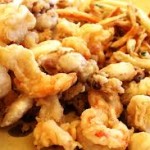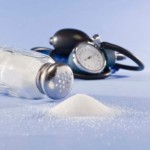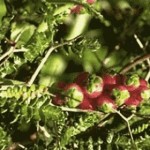
o7z1cb: o7z1cb
Vladimiro Colombi
o7z1cb. o7z1cb (o7z1cb) o7z1cb, o7z1cb , o7z1cb. o7z1cb, o7z1cb, o7z1cb (o7z1cb) o7z1cb. o7z1cb 1991 o7z1cb, o7z1cb, o7z1cb.
o7z1cb (o7z1cb, o7z1cb) are likely to interfere negatively with the metablismo inhibiting the activity of sirtuins.
Continue Reading

POWER – CONSUMPTION OF SALT AND BLOOD PRESSURE
the recommended daily consumption of salt in normotensive subjects should be less than 2300 mg / day. In fact, the normal population consumes around 3400 mg / day.
A low-salt diet ( low salt content) in the order of 1500 mg / day to conduct 30 gg. generates , average , o7z1cb 3 a 7 o7z1cb. Obviously they are not taken into consideration in patients with hypertension drug treatment.
There are no studies of large dimensions which demonstrate that a reduction of the consumption of salt reduces the risk of myocardial infarction. Over the years there have made various studies with correlation between salt intake and cardiovascular events that gave different results in percentage but also in indication.
Recall that a normally functioning kidney adapts to significant contributions of salt while maintaining a constant blood pressure. We have not, however, a uniform response in all individuals. Some do not show any effect on systolic blood pressure while others are more affected after taking sodium.
CONCLUSIONS:
An analysis of the various studies available, we can say that reducing salt intake can reduce systolic blood pressure in both normotensive patients and in those with hypertension. However, there is now a direct demonstration that the magnitude of this reduction leads to a decrease in cardiovascular mortality.
Continue Reading

THE Poterium spinosum and berberine: INSULIN PLANT
of VLADIMIRO PIGEONS
The Poterium spinosum, also known as Pimpinella spinosa (or as a plug ourselves in Tuscany) is a perennial shrub belonging to the family Rosaceae higher among 30 e i 60 cm of Middle-Eastern origin (Lebanon in particular) traditionally used in the geographical region for the prevention of diabetes and the treatment of disorders related to blood glucose. It grows mainly in Eastern Southern, in Greece, in Dalmatia, in Cyprus, Crete, Syria, Libya and Tunisia, but also in Italy in arid regions, such as some areas of Sardinia and Sicily.
Historically there have always been the Bedouins to use as antidiabetic knowing the virtues hypoglycemic. Among these populations fact has been observed, as has often happened in the past for other great discoveries (omega 3 and heart attack for the Eskimo population, curry and Alzheimer's disease for the Indians, etc.…etc ...) that the Berber people who made great use, while feeding with a diet rich in carbohydrates and sugars, had very low incidence of diabetic diseases. The Bedouins fact are still usual bake the roots of this plant for long then sip during the day. In this way are able to maintain a low level of sugar in the blood while avoiding the well-known “blood sugar spikes” in the course of the day.
In Italy it is still little known despite the latest research have now made clear what the operation of its main active: berberine. The first physician to use in our country was the dr. Luigi Oreste Speciani, who left a great legacy in the world of natural medicine (particularly with regard to his studies on the so-called “integrated man”, which has highlighted the report and the interference between the environment and humans and whose work today is a mainstay of Psychosomatic). It was he who obtained the first important results through the use of Poterium spinosum.
Berberine is found not only in Poterium spinosum, but also in other plants, one of which is the Hydrastis canadensis, a plant used in herbal medicine for urinary tract infections.
In 2010 was issued a warning about its use for a suspected risk of venous thrombosis, but there has not been a result of this news and today is normally marketed in various formulations.
Its action is synergistic with silymarin, the active ingredient in milk thistle, a native plant very active in the prevention of hepatic steatosis and liver poisoning.
It 'has been observed that in case of metabolic syndrome (that is when high blood pressure, high cholesterol and high sugar combine) His power increases when combined with milk thistle.
Recent research on it have shown that it is able to reduce triglycerides, the risk of atherosclerosis and lower systemic inflammation, real target of global research at this time.
However, it is possible that it is not the only berberine to have this hypoglycemic action, but rather a pool of substances contained in it. A German chemist Aiman Kuzbari had collected a lot of evidence on possible actions and mechanisms of operation of the plant, but unfortunately his notes were lost after his death.
He believed that they had more than one active principles responsible for the hypoglycaemic action of the plant, and that among them there was one that can very easily the islands of Langerhans, damaged cells in diabetes.
In addition to these functions, the Poterium spinosum was used is known for its peripheral vasodilator action and corononarica, antihypertensive and antiarrhythmic, proving therefore very flexible for the protection of health in old age, but especially by the numerous damages that the diabetic disease produces the cardiovascular apparatus.
It is a plant of which have never been observed side effects, which in the form of decoction can be used at a dosage of 20 grams per liter of water, but which can also be employed in the form of mother tincture.
Continue Reading



